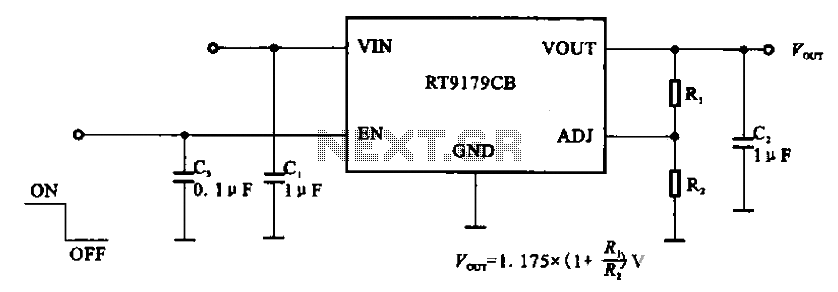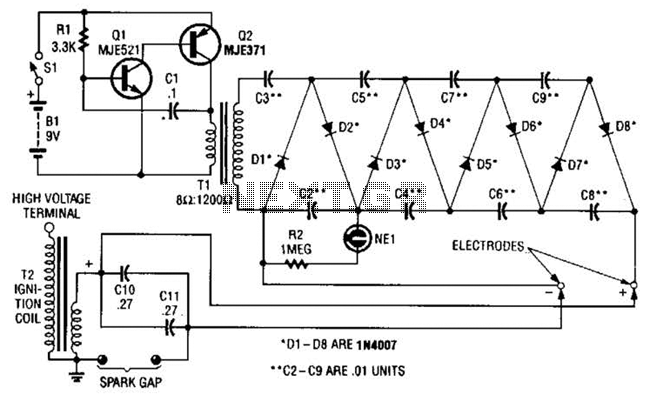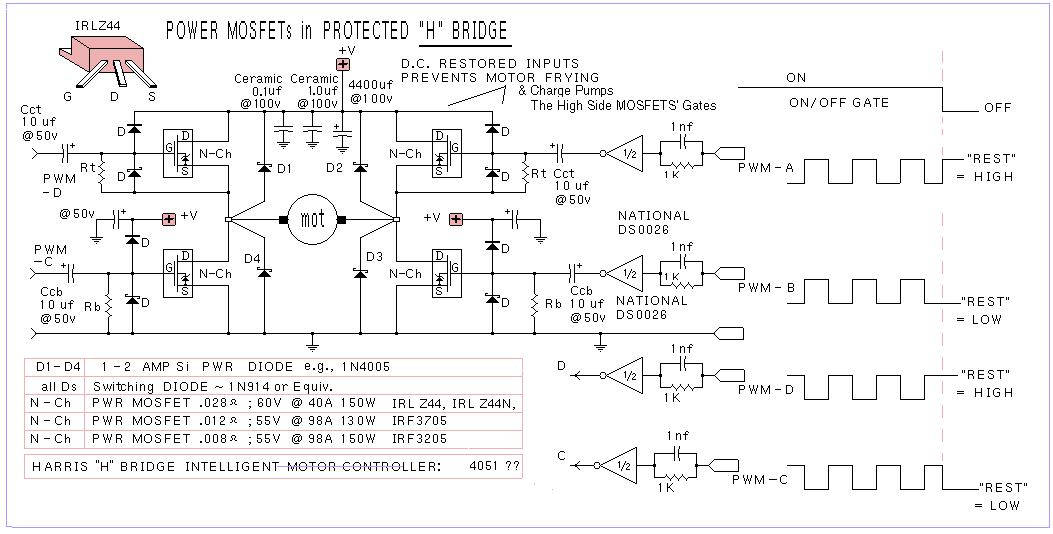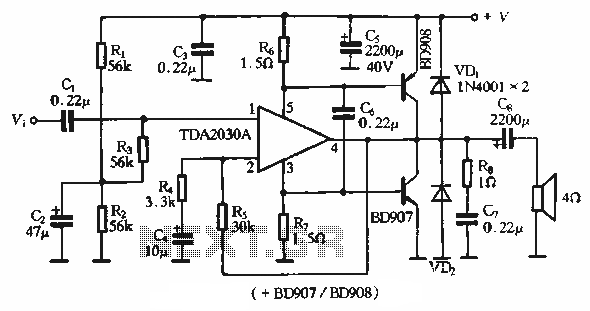
Dicing With LEDs circuit
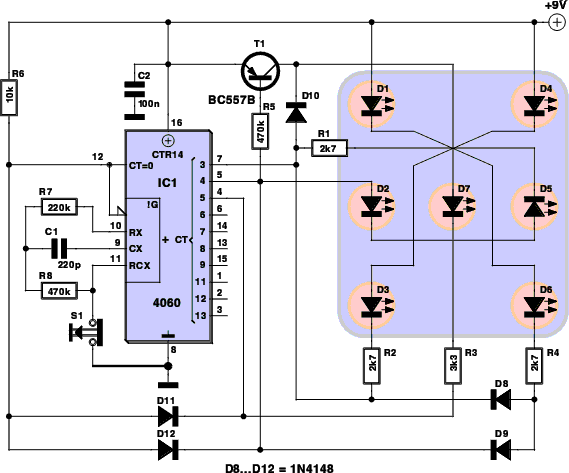
Every dedicated DIY enthusiast creates their own electronic dice using LEDs as indicators. This eliminates the need to physically roll dice; simply pressing a button activates the electronic mechanism. The design incorporates safeguards to prevent manipulation for improved outcomes, ensuring fairness in gameplay. This circuit demonstrates that an electronic die can be constructed using standard components while maintaining a compact form factor. The primary component utilized in this design is a 4060 digital counter (IC1).
The electronic dice circuit operates based on a simple yet effective design that leverages the functionality of the 4060 digital counter. This integrated circuit (IC) is capable of counting pulses and can be configured to generate a range of outputs based on the input clock frequency. In this application, the 4060 serves as the core counting mechanism, producing a binary output that corresponds to the number displayed on the dice.
The circuit typically includes a push-button switch connected to the reset pin of the 4060, allowing the user to initiate a new roll. Upon pressing the button, the circuit activates, and the 4060 begins counting in response to an oscillator circuit that provides a stable clock signal. The output of the 4060 can be connected to a series of LEDs, each representing a different face of the die. A simple decoder circuit may be used to drive the LEDs based on the output from the 4060, illuminating one LED at a time to represent the current value of the roll.
To ensure the integrity of the game, the circuit can be designed to include features such as a randomization algorithm, which can be implemented using additional components like flip-flops or logic gates. This would enhance the unpredictability of the output and prevent any potential bias that could arise from external manipulation.
The compact nature of this electronic dice circuit makes it suitable for integration into various projects, from board games to portable gaming devices. By utilizing standard components, the design remains accessible to hobbyists and DIY enthusiasts, promoting creativity in electronic design while ensuring functionality and fairness in gameplay.Every self-respecting DIYer makes his own electronic dice with LEDs as spots. Then you don t have to throw the dice anymore just push the button. The electronics also ensures that nobody can try to improve his luck by fiddling with the dice. Too bad for sore losers! This circuit proves that an electronic die built using standard components can be made quite compact. The key component of here is a type 4060 digital counter (IC1).. 🔗 External reference
The electronic dice circuit operates based on a simple yet effective design that leverages the functionality of the 4060 digital counter. This integrated circuit (IC) is capable of counting pulses and can be configured to generate a range of outputs based on the input clock frequency. In this application, the 4060 serves as the core counting mechanism, producing a binary output that corresponds to the number displayed on the dice.
The circuit typically includes a push-button switch connected to the reset pin of the 4060, allowing the user to initiate a new roll. Upon pressing the button, the circuit activates, and the 4060 begins counting in response to an oscillator circuit that provides a stable clock signal. The output of the 4060 can be connected to a series of LEDs, each representing a different face of the die. A simple decoder circuit may be used to drive the LEDs based on the output from the 4060, illuminating one LED at a time to represent the current value of the roll.
To ensure the integrity of the game, the circuit can be designed to include features such as a randomization algorithm, which can be implemented using additional components like flip-flops or logic gates. This would enhance the unpredictability of the output and prevent any potential bias that could arise from external manipulation.
The compact nature of this electronic dice circuit makes it suitable for integration into various projects, from board games to portable gaming devices. By utilizing standard components, the design remains accessible to hobbyists and DIY enthusiasts, promoting creativity in electronic design while ensuring functionality and fairness in gameplay.Every self-respecting DIYer makes his own electronic dice with LEDs as spots. Then you don t have to throw the dice anymore just push the button. The electronics also ensures that nobody can try to improve his luck by fiddling with the dice. Too bad for sore losers! This circuit proves that an electronic die built using standard components can be made quite compact. The key component of here is a type 4060 digital counter (IC1).. 🔗 External reference
